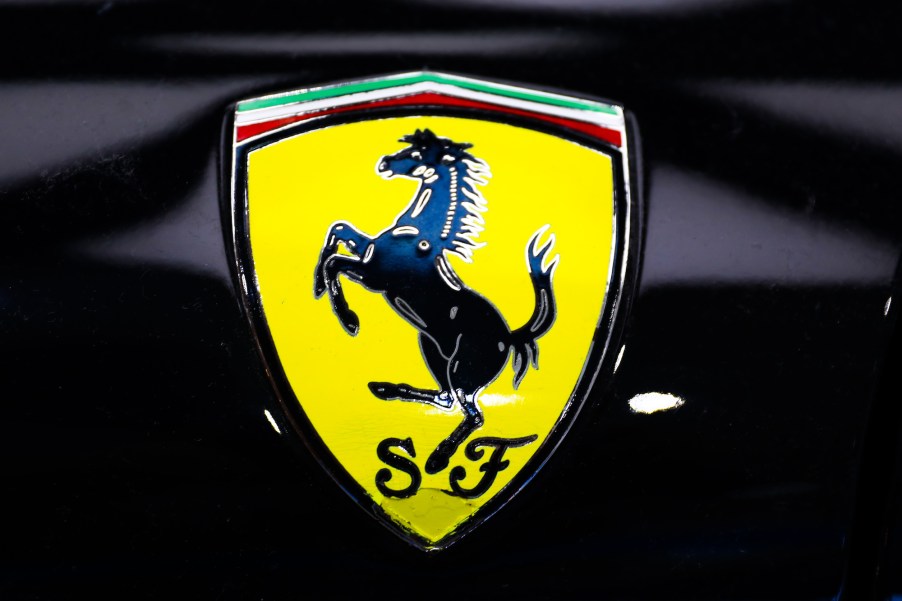
Can Ferrari’s New CEO Lead the Prancing Horse to Electrified Glory?
Ferrari has long staked its reputation on its high-performance models. The brand’s supercar lineup never disappoints, with powerful engines capable of extreme speeds and exhilarating performance. But as the auto industry shifts to electric, some observers believe Ferrari has fallen behind. However, the Italian automaker’s recent announcement of a new tech-savvy CEO and first plug-in hybrid vehicle could signal renewed glory for the Prancing Horse.
Tech leader to drive Ferrari into the future as CEO

Ferrari recently recruited 52-year-old Benedetto Vigna, who “helped the iPhone sense when it’s been tilted sideways,” away from STMicroelectronics NV to become the automaker’s new CEO, Bloomberg reported.
Vigna helped pioneer the iPhone 4’s three-dimensional screen-sensor technology widely used in smartphones, gaming consoles, and vehicle navigation systems globally. STMicro is also known for providing components to the German mega-supplier Robert Bosch GmbH and EV maker Tesla.
Tom Narayan, an RBC Capital Markets analyst, added, “Appointing someone relatively young and from the technology field sets the tone for where Ferrari is headed.”
Bloomberg reported that Vigna will be under pressure to “strike a balance between engineering purists hooked on roaring combustion engines and a younger clientele demanding the Italian carmaker embrace a battery-powered future in the same way that Porsche or Lamborghini have done.”
Ferrari’s delayed effort to electrify its lineup
While Porsche, Lamborghini, and Ferrari are identified for their soulful internal combustion engines and delightful performance, the auto industry’s electrification is inevitable, even for these luxury brands. And Ferrari has been under fire lately for its delayed effort to embrace electrification.
In 2019, Porsche released the Taycan, which has proven that an electrified supercar is doable. The 800-volt architecture delivers performance and has attracted more new buyers to the luxury brand. Bloomberg reported that sales of the electric Taycan are almost on par with the carmaker’s iconic 911.
In addition, Ferrari’s Italian rival, Lamborghini, recently announced its plan to offer plug-in hybrid versions of each model in its lineup by 2024, with an all-electric model to follow. Lamborghini has made it clear that electrification is the future for the luxury performance brand. The limited production of the Sian in 2019 was the first hint at Lamborghini’s push to electrifying its lineup. But rather than having a charging port, the Sian stores energy from the car’s impressive gasoline engine in a supercapacitor and uses it to provide additional power when the driver accelerates or shifts gears.
Ferrari’s delay in electrifying its lineup coincides with the carmaker’s loyalty to its heritage of high-performance cars. However, with its passion for change and a new tech-savvy CEO, Ferrari looks toward an electrified future. Interim CEO John Elkann even recently outlined plans for a fully electric model for 2025, Motortrend reports.
The brand’s new PHEV supercar
Despite Ferrari’s delay in producing an EV, its new PHEV shows a step in the right direction. With a sticker price of about $500,000 to $700,000, the 2021 Ferrari SF90 Stradale is the most expensive model in the lineup. The Drive agrees this PHEV doesn’t disappoint in providing Ferrari-level performance, but it lacks bells and whistles. However, this mid-engine car features a 4.0-liter twin-turbocharged V8 and three electric motors, delivering an estimated 0-to-62-mph time of 2.5 seconds.
Staying true to the Italian automaker’s heritage, the Ferrari SF90 also offers three performance modes: hybrid, EV only, and Qualify. As a normal production supercar, the SF90 shows the Prancing Horse is cantering toward an electric lineup.


